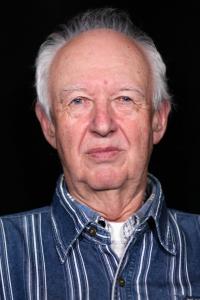I am convinced that every historical period has its own logical order
Download image
Jiří Langer was born on April 27, 1936 in Brno. The family lived in Adamov, his father worked as a developer in Brno Zbrojovka. After Munich, the management of Zbrojovka moved to Prague, where the Langer family also went. Jiří Langer witnessed the Prague Uprising and the liberation of Prague. He has been drawing since childhood. He wanted to study graphics and illustrate books. However, he was repeatedly not admitted to the Academy. He studied history at the Faculty of Arts of Charles University. During his studies, he started hiking from South Moravia to the Orava region. He became interested in rural architecture, traditional farming and sacral arts. After graduation he moved to Orava and founded the Orava Gallery. He was fundamentally involved in the establishment of the Orava Village Museum in Zuberec. In the early 1970s he moved to Rožnov pod Radhoštěm and became one of the main creators of the Wallachian Open Air Museum. In 2011 was awarded the prestigious European Union Prize for Cultural Heritage.


